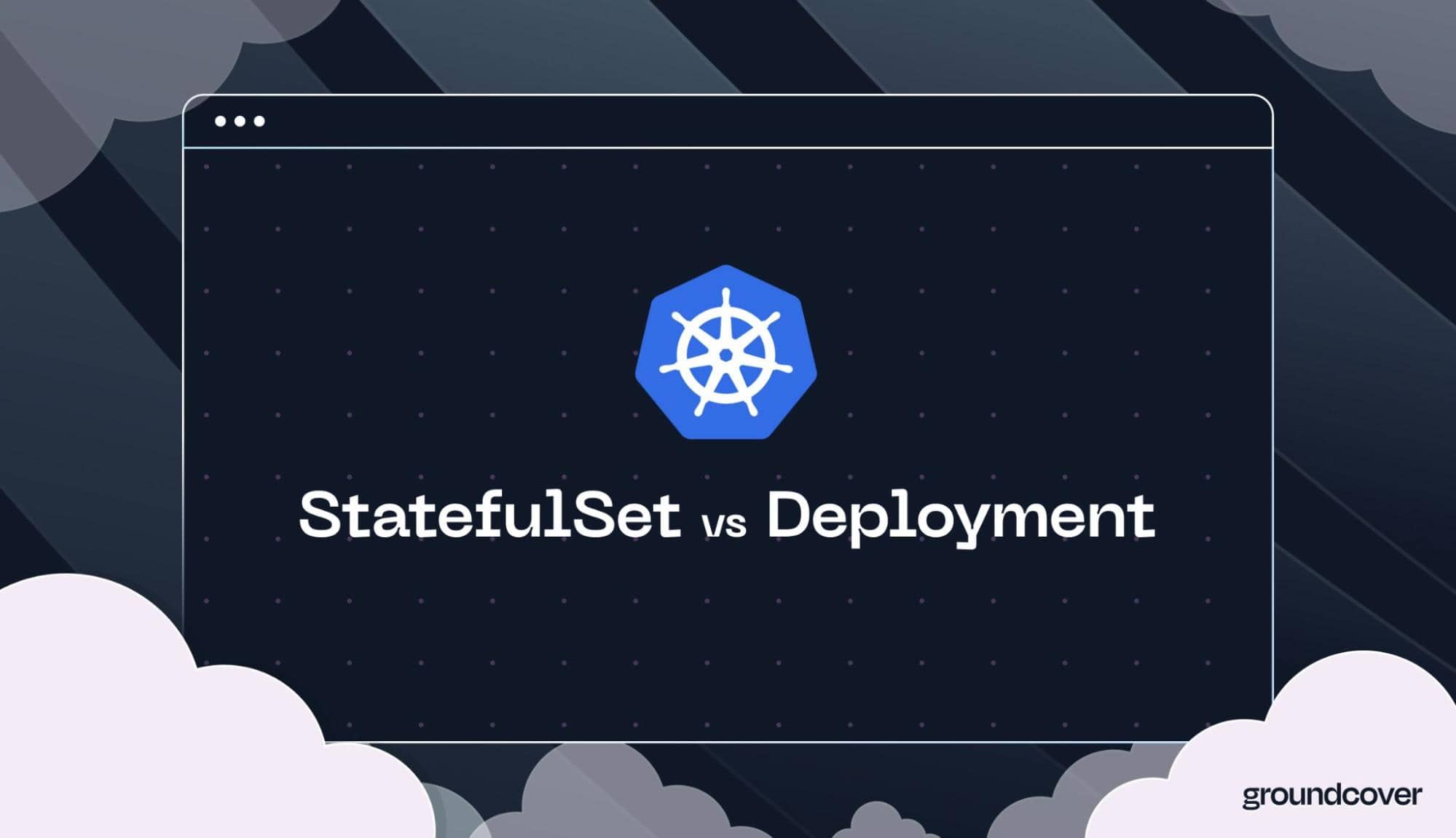
.jpg)
Container monitoring is to DevOps and IT engineers what owning an electric car is to experienced drivers: Familiar and different at the same time.

Just as electric cars look and feel in most ways like conventional vehicles, containerized applications generate the same basic types of observability data – namely, metrics, logs and traces – as traditional apps. But also like electric vehicles, containers work quite differently under the hood. As a result, collecting monitoring data can be challenging. So can parsing and correlating all of it to make sense of the performance issues that may arise in a complex containerized application environment.
But with the right approach, adapting traditional application performance monitoring strategies to support containers is easy enough. This article provides guidance by walking through what container monitoring means, how it works, and how to get started building an effective container monitoring strategy. We'll also compare popular container monitoring tools and offer guidance on how to choose the right solution.
What is container monitoring?
Container monitoring is the process of collecting and analyzing performance data from containerized applications to detect and troubleshoot problems.
For example, by looking for anomalies in the CPU and memory consumption metrics of a container, admins may be able to identify container performance trouble. Likewise, scanning container logs for error events could reveal issues.
Container monitoring vs. application performance monitoring
In most ways, container monitoring is similar to application performance monitoring (APM), a practice that most organizations have long had in place to help monitor and manage the performance of conventional applications – meaning those that don't run in containers. Both types of operations involve collecting and analyzing various data sources to identify and respond to performance issues. They also track the same basic types of data, such as error rates, latency and resource utilization.

That said, container monitoring and APM are different in that the former requires somewhat different techniques for collecting and analyzing data. This is because containers expose logs and metrics in different ways from traditional apps. In addition, a containerized application often includes several distinct containers – especially if the application runs as a set of microservices, with each microservice hosted in its own container. This makes it important to collect, analyze and correlate logs, metrics and traces from across all containers. In contrast, conventional apps typically only include one application service, meaning there is only one set of data to monitor and assess.
On top of this, container monitoring requires the ability to monitor a complex hosting stack that includes many components beyond just containers. You also need to ensure that you collect monitoring data before containers shut down since the data is not stored persistently. We'll discuss these unique aspects in more detail below when we cover the special challenges of monitoring containerized applications.
How does container monitoring work?
The exact process for monitoring containers varies depending on factors like how many containers you need to monitor and how they are configured to expose metrics and generate logs.
But in general, container monitoring typically includes the following core steps:
- Collect logs, metrics and traces from the various places where they originate within each container. This is your core container monitoring data.
- Analyze the monitoring data to identify baseline performance trends.
- Identify deviations from the baseline trends, such as a sudden spike in resource consumption. These could be signs of performance issues – although they could also just be a natural response to shifts in application load, which is why context is critical for effective container monitoring.
- Correlate monitoring data from across all containers in your app, as well as data from any related systems (like your orchestration platform, if you're using one), to understand the scope of performance issues and hone in on their root cause.
Benefits of container monitoring
Container monitoring delivers a range of key benefits for any organization that deploys modern, containerized apps.
Troubleshooting and issue detection
When your containerized applications experience problems, such as errors or degradation in response time, container monitoring can help you identify the issue before your users start to notice it. It also provides the information you need to troubleshoot and resolve the problem.
Performance optimization
Container monitoring can help optimize overall application performance. For example, monitoring might reveal that some of your apps are under performing because they lack sufficient CPU, in which case changing the CPU allocated to them is likely to improve performance.
Cost optimization
In other cases, you might discover from container monitoring that your apps are not using all of the resources assigned to them, and that scaling down allocations could save money without altering performance. This allows you to optimize your spending and get the most bang (in terms of performance) for your buck, so to speak.
Security and compliance
Monitoring can help reveal potential security issues, such as unusual authentication requests or anomalous resource utilization, which could be signs of a breach or attempted breach. In addition, being able to demonstrate that you have adequate monitoring controls and processes in place may be important for meeting compliance requirements that mandate reasonable measures for securing containerized apps.
Challenges with container monitoring
As we mentioned, although container monitoring is similar in many respects to traditional application monitoring, it's different in certain key ways due to the unique nature of containers. These differences give rise to some distinct challenges, which organizations must address to monitor containers effectively.
Each container generates its own monitoring data
Typically, each container generates its own logs and metrics. Because a single app may include multiple containers, it's necessary to collect monitoring data from each one separately. This is different from conventional monitoring, where there are fewer discrete data sources to collect and analyze.
Containers are ephemeral
Containers are ephemeral, which means that when they shut down, any data (including logs) that lives inside them is deleted permanently unless it was copied to an external location. For this reason, it's important to monitor containers in real time and collect any log data as soon as it's generated.
Containers share resources
In most cases, containers running on the same server share resources with each other. It's possible to allocate maximum and minimum amounts of resources to individual containers using features like Kubernetes limits and requests, but unless you do this, containers can end up competing with each other for available resources and create performance issues if there aren't enough resources to go around – a risk known as the "noisy neighbor" problem.
Containers are part of complex systems
Typically, containers run as part of a larger technology stack that also includes underlying servers, an orchestrator and possibly tools like load balancers, service meshes and API gateways. Because problems within any of these components could impact container performance, it's important to be able to correlate container monitoring data with data from other layers of the stack to identify root causes effectively.
What to look for in a container monitoring system
Today, there are a variety of tools available that are capable of basic container monitoring. To choose the ideal solution, consider factors like the following.
Coverage of collected metrics
How many distinct types of metrics can the tool collect and analyze? Can it look only at CPU and memory metrics, for example, or can it also track data like latency and error rates?
Coverage of log formats
Because each container may write log data in a different format, the best monitoring solutions support a variety of log formatting types. It's also useful if your tools can transform logs so that they all exist in a standardized format.
Collection of events
Monitoring solutions should be able to collect events, such as authentication events and errors. Events are often recorded in logs, so your tools need to be able to parse logs and pull event data out of them. But in some cases, event data is also generated by other systems in your stack – such as Kubernetes, which registers its own types of events – so ideally, your container monitoring tools will be able to collect eventand data from those sources, too.
Pricing
Pricing obviously matters when it comes to selecting a tool. In addition to the licensing cost of the tool itself (if it has one), consider factors like data ingestion and storage fees, which can contribute to the cost of container monitoring. Consider, too, how much CPU and memory your monitoring tools consume, since you'll likely be paying for these infrastructure resources – and here we'll shamelessly plug the advantages of eBPF, which can lower monitoring costs due to its ability to collect data hyper-efficiently.
Ability to get metrics, logs, and traces in one place
Analyzing container monitoring data effectively requires the ability to place all of the relevant data in a central location. To do this, monitoring tools must be able to collect data from each of the places where it originates, and then move it to a central repository.
Intelligent alerting capabilities
Generating alerts about anomalies or performance issues is a basic feature of any container monitoring tool. But to avoid overwhelming teams with false positives or low-priority alerts, monitoring tools should support intelligent alerting. Intelligent alerting allows capabilities like the grouping of related alerts to reduce the "noise" that engineers must contend with as they troubleshoot problems.

Distributed tracing
Virtually any container monitoring tool can collect metrics, logs and traces. However the most capable container monitoring solutions also support distributed tracing. Distributed tracing means tracing how a request flows between different microservices within an application. It's especially important for pinpointing bottlenecks by determining exactly which microservice is slowing down the processing of a request.
Support for monitoring the entire stack
As we've mentioned, containers are just one layer of most container-based application hosting stacks. The best container monitoring tools can also monitor your orchestrator, servers, network and more to deliver end-to-end visibility.
10 best container monitoring tools in 2024
Here's a rundown of what we consider the best container monitoring tools as of 2024, along with a concise summary of their pros and cons.
1. groundcover
Call us biased, but we have a soft spot for groundcover, a container and Kubernetes troubleshooting and monitoring tool that can collect and correlate data from across all of your hosting stack. And, because groundcover uses eBPF to collect data, it has a much lighter footprint than monitoring solutions that rely on less efficient techniques, like agent-based data collection.
2. Prometheus
Prometheus is a popular open source monitoring tool. As an open source solution, it requires a bit more setup and management effort than most commercial tools, but it's flexible and can run almost anywhere.
3. Grafana
The main purpose of Grafana, an open source tool that happens to be the basis of the visualization engine within groundcover, is to generate visualizations that help teams make sense of performance data. That said, it doesn't collect data itself; you typically need to pair it with another tool to get the data that powers your visualizations.
4. Splunk
Splunk is a monitoring and observability tool that supports a wide variety of use cases, including container monitoring. Splunk's complexity might mean that this solution is overkill if your only goal is to monitor containers, but if you need to monitor other types of environments, too, Splunk can probably accommodate them.
5. SigNoz
SizNoz is another open source monitoring tool. Its proponents view it as a more user-friendly container monitoring solution than other open source tools, but it may still require some significant configuration and management effort.
6. Datadog
Datadog is a cloud-based monitoring platform that can support many use cases, including container monitoring. Its main drawback, arguably, is that it's a relatively closed platform built on proprietary technology, although it does offer a fair number of integrations.
7. Dynatrace
Dynatrace is also a proprietary monitoring and observability tool capable of supporting many different use cases. Arguably, Dynatrace is most oriented toward tasks like real-user monitoring and synthetic monitoring, but it can monitor containers as well.
8. SolarWinds Server & Application Monitor
SolarWinds is capable of container monitoring, although it's a generic monitoring solution that doesn't focus on containers in any particular way. You'll likely find it most useful if you need to monitor other types of environments as well as containers.
9. Sysdig
Although designed mostly for security monitoring, Sysdig can handle basic container metrics and log analysis, too – but it would be a stretch to use it as your only performance monitoring tool.
10. Sumo Logic
Sumo Logic has grown popular for the deep control that it offers over data collection and analysis. Its main drawback, arguably, is that it's a relatively complex tool that presents a learning curve.
Best practices for container monitoring
No matter which container monitoring solution you choose, the following practices can help you monitor containers effectively and efficiently.
1. Correlate data from across your stack
We said it before, but we'll say it again because it's so important: Container monitoring is most effective when you correlate data from your containers with other sources of visibility, such as Kubernetes monitoring (assuming you're using Kubernetes as your orchestrator). Otherwise, you'll struggle to figure out whether performance problems stem from your containers or from other parts of your stack.
2. Monitor continuously and in real time
Pulling monitoring data only periodically is not ideal because it doesn't allow you to detect anomalies instantaneously. A better approach is to monitor continuously and in real time so that you'll know as soon as an issue appears.
3. Manage monitoring data efficiently
Monitor data costs money to process and store – which is why you should try to filter out data you don't need before you analyze it and avoid retaining data that you don't require after the analysis is complete.
4. Keep monitoring tools lightweight
The lighter the footprint of your monitoring tools, the faster they'll typically collect and process data, and the less they'll cost you to operate (due to their reduced CPU and memory consumption). Here again, we'll take an opportunity to plug groundcover for its ultra-lightweight, eBPF-based approach to container monitoring.
5. Be agnostic
Ideally, your container monitoring tools and processes will be capable of supporting any type of containerized application environment – regardless of the container runtime, infrastructure platform or other solutions you choose. That way, you can easily migrate your applications to different types of environments or platforms without having to overhaul your monitoring approach.
Container monitoring with groundcover
If you're searching for a platform-agnostic, flexible, hyper-efficient and cost-effective container monitoring tool, groundcover is your answer.

Built from the ground up to enable fast, accurate insights into cloud-native environments – like those built around containers and Kubernetes – groundcover allows you to collect data from across all layers of your stack, then correlate it in real time so you can pinpoint the root cause of performance issues quickly.
Container monitoring: A new take on an old practice
Now that we've covered the ins and outs of container monitoring, let's return to where we began – by observing that, in a lot of ways, container monitoring will likely seem familiar to anyone who has experience monitoring other types of applications or infrastructure.
But there are some exceptions – such as the way containers generate monitoring data and the need to correlate data from across the hosting stack – that make container monitoring a special beast. To conquer these challenges, you'll need to adopt some special tools and practices that go above and beyond those of classic APM.
Sign up for Updates
Keep up with all things cloud-native observability.
We care about data. Check out our privacy policy.


.jpg)












.svg)